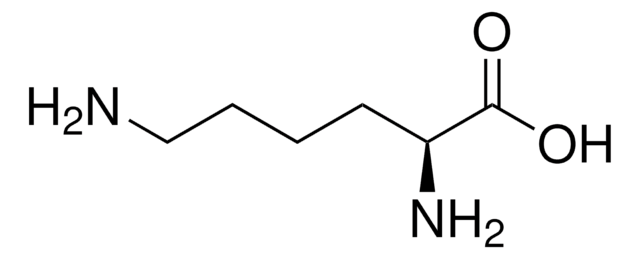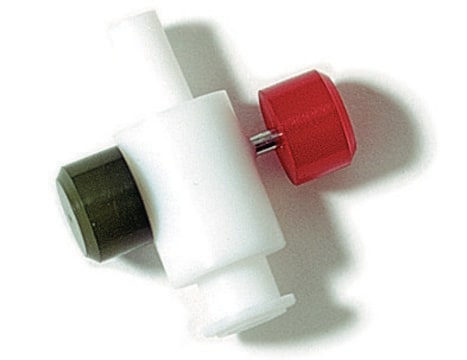23128
L-Lisina
analytical standard
Sinónimos:
Ácido (S)-2,6-diaminocaproico
About This Item
Productos recomendados
grado
analytical standard
Nivel de calidad
Análisis
≥95.0% (HPLC)
caducidad
limited shelf life, expiry date on the label
clases químicas de analitos
amino acids, peptides, proteins
técnicas
HPLC: suitable
gas chromatography (GC): suitable
impurezas
≤2.0% water
color
white to off-white
mp
215 °C (dec.) (lit.)
aplicaciones
cleaning products
cosmetics
flavors and fragrances
food and beverages
personal care
formato
neat
cadena SMILES
NCCCC[C@H](N)C(O)=O
InChI
1S/C6H14N2O2/c7-4-2-1-3-5(8)6(9)10/h5H,1-4,7-8H2,(H,9,10)/t5-/m0/s1
Clave InChI
KDXKERNSBIXSRK-YFKPBYRVSA-N
¿Está buscando productos similares? Visita Guía de comparación de productos
Descripción general
Aplicación
Productos recomendados
Código de clase de almacenamiento
11 - Combustible Solids
Clase de riesgo para el agua (WGK)
WGK 1
Punto de inflamabilidad (°F)
Not applicable
Punto de inflamabilidad (°C)
Not applicable
Elija entre una de las versiones más recientes:
¿Ya tiene este producto?
Encuentre la documentación para los productos que ha comprado recientemente en la Biblioteca de documentos.
Los clientes también vieron
Protocolos
Separation of L-Alanine; Glycine; L-Valine; L-Leucine; L-Isoleucine; L-Proline; L-Methionine; L-Serine; L-Threonine; L-Phenylalanine; L-Aspartic acid; L-4-Hydroxyproline; L-Cysteine; L-Glutamic acid; L-Asparagine; L-Lysine; L-Glutamine; L-Histidine; L-Tyrosine; L-Tryptophan; L-Cystine
Nuestro equipo de científicos tiene experiencia en todas las áreas de investigación: Ciencias de la vida, Ciencia de los materiales, Síntesis química, Cromatografía, Analítica y muchas otras.
Póngase en contacto con el Servicio técnico




